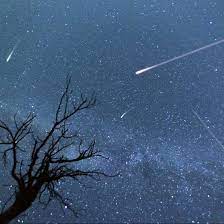Perseids Meteor Shower Star Party
Monday, August 11, 2025 @ 8:00 pm - 10:00 pm
Carson Nature Center, South Platte Park — 3000 W. Carson Drive, Littleton
< Back to Event Schedule

Join South Platte Park for the biggest celestial show of the year! Lay back in the park’s lakeside meadow and enjoy a campfire, s’mores, and good ol’ fashioned stargazing after the park is closed. South Suburban naturalists will have telescopes trained on other astronomical objects the night sky as well. Meteor shower gazing isn’t just about meteors. It’s an experience that brings families and friends together, it’s a very relaxing and social time, and the ‘there’s one!’ is just icing on the stargazing cake. There’s no better time than late summer, while the nights are still mild, and before the hustle of fall begins. For more information and to register. Registration is required.
About the Perseids Meteor Showe
This August, the Northern Hemisphere will get a major celestial treat in one of the largest meteor displays of the year. The Perseids Meteor Shower produces meteors that streak across lazy summer skies, providing one of the best natural light shows in the heavens. Every shower is different and has its own signature, and every meteor is unique. The Perseids are known to be very bright and slower moving, giving viewers time to turn and see when ‘there’s one!’ is shouted out.
The Perseids Meteor Shower happens annually as earth passes through the icy debris of Comet Swift-Tuttle. The particles left behind this astronomical litterbug enter our atmosphere at around 40 miles per second and burn bright, creating ‘shooting stars’ or meteors. So why isn’t the earth peppered with big holes from these flying fireballs? They are smaller than a pencil eraser and they burn up completely about 60 miles over our heads (anything large enough to make it to earth is promptly renamed a meteorite). And why don’t we call the biggest cosmic event of the summer the Swift-Tuttle Meteor Shower? Meteor showers are named after the constellations where the meteors appear to radiate from (the intersection of the comet debris, the constellation and earth), and in the case of our August show, the constellation is Perseus.
We pass through the highest amount of Swift-Tuttle debris on August 12 & 13 (peak nights) and can expect to see multiple meteors per hour in the darkest skies. Although meteor showers have ‘peak’ nights and radiant points, they can be seen for days or weeks before or after the peak, depending on the shower, and can be seen anywhere in the sky. Activity visible from July 17 to August 23, 2025
The best viewing time is generally pre-dawn or when their namesake constellation is above the horizon and high in the sky, but during large shows like the Perseids, they can be seen any time after dusk. For this year’s summer show, a waning three-quarter moon will rise, but that vexing moon or city lights can’t contend with the brightest of the Perseids.
| Cost | Adults $9; Children 6-17 $6. Registration required. To Register visit www.ssprd.org/nature |
| Sponsor(s) | South Suburban Parks & Recreation |
| Contact | South Suburban Parks & Recreation |
| Phone | 303-730-1022 x61012 |
| Website | https://www.ssprd.org/nature |
LOCATION:
Carson Nature Center, South Platte Park
3000 W. Carson Drive
Littleton
